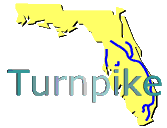| 1.0 | TRAVEL AND TRAFFIC MANAGEMENT |
| 1.6 | TRAFFIC CONTROL |
| 1.6.2 | Traffic Control shall include a Traffic Surveillance function. |
| 1.6.2.1 | Traffic Surveillance shall include a Vehicle Detection function with the capability of accurately detecting vehicles in a real-time fashion. |
| 1.6.2.1.1 | Vehicle Detection shall include the capability to determine those vehicles that are HOVs. |
| 1.6.2.2 | Traffic Surveillance shall include a Data Collect function to provide the capability to collect data that are needed for determining traffic flow and prediction. |
| 1.6.2.2.1 | Data Collect shall provide the capability to quickly feedback traffic data to the control processes. |
| 1.6.2.3 | Traffic Surveillance shall include an area wide surveillance capability to include several jurisdictions. |
| 1.6.2.3.1 | The area wide surveillance shall gather speed and flow information. |
| 1.6.2.4 | Traffic Control shall provide the capability to acquire detailed traffic measurements at specific locations. |
| 1.7 | INCIDENT MANAGEMENT |
| 1.7.1 | Incident Management shall provide an incident identification function to identify incidents. |
| 1.7.1.1 | The incident identification function shall include the capability to identify predicted incidents. |
| 1.7.1.1.1 | The incident identification function shall use information from the following types of sources, where available, to identify predicted incidents: |
| 1.7.1.1.1(a) | Traffic flow sensors. |
| 1.7.1.2 | The incident identification function shall include the capability to identify existing (both planned and unplanned) incidents. |
| 1.7.1.2.2 | The incident identification function shall determine and continuously monitor at least the following characteristics of each existing incident: |
| 1.7.1.2.2(a) | Type. |
| 1.8 | TRAVEL DEMAND MANAGEMENT |
| 1.8.0 | Travel Demand Management will generate and communicate management and control strategies that will support and facilitate the implementation of TDM programs, policies and regulations. It consists of two major functions which are (1) Increase Efficiency of Transportation System and (2) Provide Wide Variety of Mobility Options. |
| 1.8.3 | TDM shall include a sensors/control function. |
| 1.8.3.1 | The sensors/control function shall provide the capability to gather information needed for the generation of management and control strategies to include, but not be limited to the, following: |
| 1.8.3.1(b) | Usage levels. |
| 2.0 | PUBLIC TRANSPORTATION MANAGEMENT |
| 2.2 | EN-ROUTE TRANSIT INFORMATION |
| 2.2.1 | TI shall include an information distribution function that disseminates information to travelers. |
| 2.2.1.2 | Information Distribution shall include a User Interface feature. |
| 2.2.1.2.1 | User Interface shall provide the capability for users to access travel related information at fixed locations. |
| 2.2.1.2.1.3 | Fixed Location user interface shall provide the capability to utilize local ATM networks to provide travel information to users. |
| 2.2.1.2.2 | User Interface shall provide the capability for users to access travel related information at mobile locations. |
| 2.2.1.2.2.1 | Mobile Location user interfaces shall provide the capability for users, either one passenger at a time or to a group environment, to access travel related information while on board transit vehicles. |
| 2.4 | PUBLIC TRAVEL SECURITY |
| 2.4.2 | PTS shall include a Security Sensors (SS) function. |
| 2.4.2.2 | SS shall include both video and audio systems at key locations to monitor activities. |
| | |




